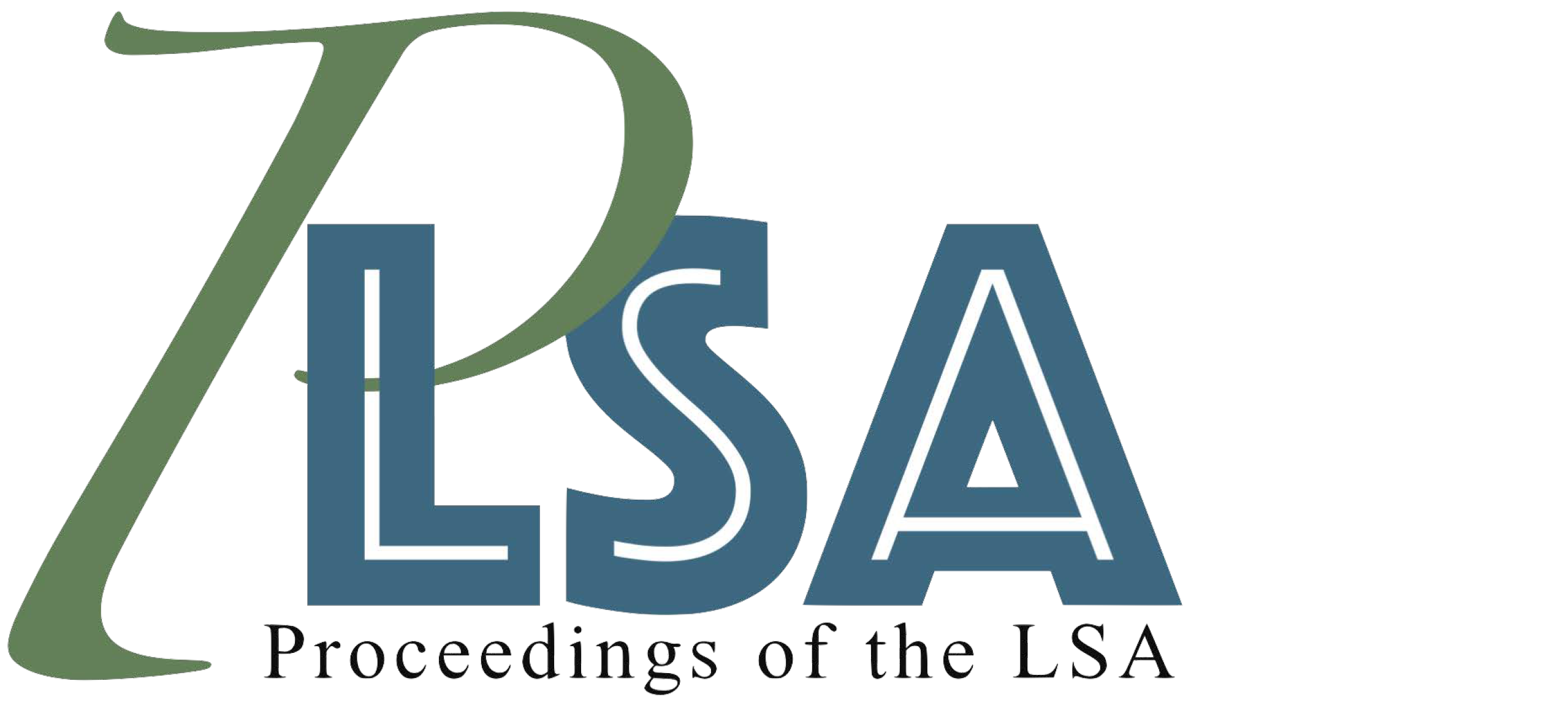Soft d in Danish: Acoustic characteristics and issues in transcription
DOI:
https://doi.org/10.3765/plsa.v5i1.4739Keywords:
phonetics, transcription, international phonetic alphabet, Danish, lenitionAbstract
Danish, like closely related Swedish and Norwegian, has descended from Old Norse (Haugen 1976). While the three contemporary languages are variably mutually intelligible, Danish has phonologically diverged from the other Scandinavian languages (Gooskens 2006). This is caused by extensive consonant lenition and vowel reduction within Danish (Basbøll 2005). The lenition of <t> and <d> in syllable coda positions into a sound that Danish linguists have called soft-d is seemingly unique to the Danish. In most phonological descriptions, it is transcribed using the phonetic symbol /ð/, a voiced interdental fricative. We assert that this is not accurate; not all phonologists agree that the soft-d is a fricative. Some describe it as an alveolar semi-vowel (Haberland 1994), while others transcribe it as a velarized, retracted, and lowered alveolar approximant (Basbøll 2005). Many observe that the sound resembles lateral /l/, a distinct phoneme of Danish (Wells, 2010). Through acoustic analysis of tokens taken from the DanPASS corpus (Grønnum 2016) we show that the acoustic properties (HNR) of soft-d are indeed not the same as a fricative, but rather that of an approximant or vowel. Therefore, the use of /ð/ to transcribe this symbol is inaccurate and does not align with the goals of the International Phonetic Association.
Downloads
Published
Issue
Section
License
Published by the LSA with permission of the author(s) under a CC BY 4.0 license.
